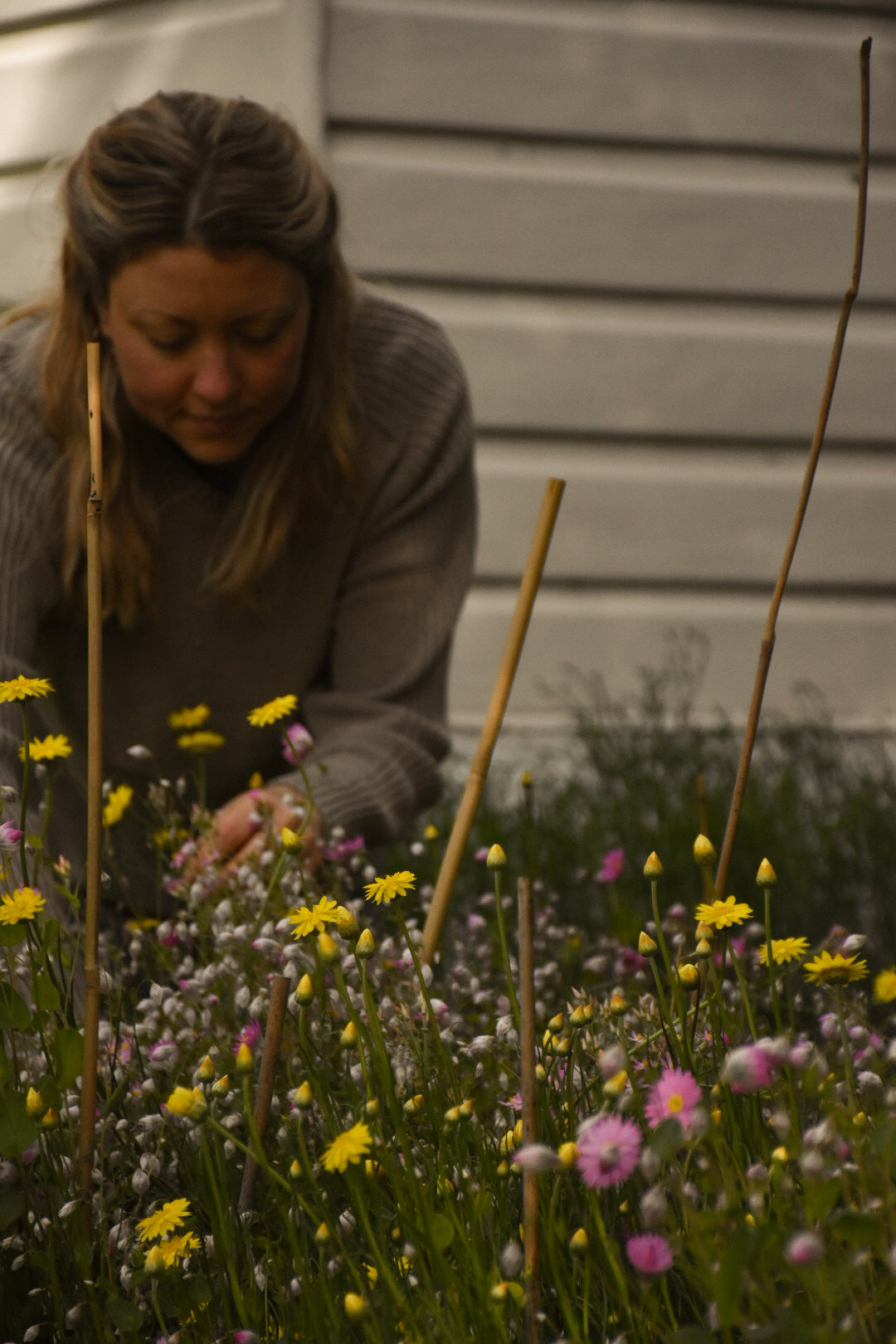And Why you May Want to Consider Growing Them in Your Garden...
Native paper daisies are part of the Asteraceae plant family, the second most abundant plant group in Australia. There are around 1,000 different types of native daisies, many of which have those irresistible, papery petals, or ‘bracts,’ that define what we call a ‘paper daisy.’
These crispy little gems can be found throughout the country, it all sorts of colours and forms, it is hard not to become enthralled by their dazzling beauty and dizzying variety, but if this isn’t enough to make you fall in love with them, here are a few more reasons why you might consider adding them to your garden.
A THOUGHTFUL CHOICE FOR THE ENVIRONMENT
Growing native daisies creates a haven for insects, and these flowers are especially attractive to indigenous bees. There is a great amount of intrigue around bringing bees into our gardens which extends far beyond the pollination of food crops. Nearly all flowering plants on earth need help from pollinators in order to reproduce; pollination leads to fertilisation and the development of seed and fruit, which then feed an array of wildlife; pollinators drive biodiversity and a healthy ecosystem; they cycle nutrients and contribute to soil formation… a healthy ecosystem provides clean air and water, food, resources, so on and so forth.
FEEDING THE BEES
Bees, moths, flies, butterflies, wasps, and beetles are all incredibly valuable critters that will help your garden flourish while helping the environment beyond your property line as well. Insects have a strong preference for daisies and all of the bright colours that they come in; pollinators love to hover and sit on the landing pad of the tightly packed disk florets that make up the middle of a daisy (which is the true flower) and dip into each one of the tiny little floret blooms.
Watching life flock towards these flowers, magnetised by colour, scent, pollen and nectar, is a thrilling sight to see. I regularly find my flowers hosting beneficial insects such as ladybirds and mantises, while also being visited by pollinators such as blue-banded bees, teddy bear bees, peacock carpenter bees, painted lady butterflies, hover-flies, and many small native bees that I am yet to identify.
FUTURE-PROOFING
There is a wonderful amount of interest in growing natives to please wildlife, but as the climate crisis becomes more apparent with each passing day, gardeners are also giving more thought towards future-proofing their properties by planting native as well; In general, Australian natives are tough, and as the earth warms, they are better equipped to handle dry spells and heat waves. Natives require less water and less feed and also tend to have fewer pest problems; Nurseries and seed providers have made it so easy to source beautiful natives for the home garden and I suspect it will only get easier.
Strawflowers (Xerochrysum bracteatum) and paper daisies (Rhodanthe chlorocephala subsp. rosea) are the most popular native daisies to add to annual garden beds, but they are very different plants. Strawflowers have bulbous flowers with really tough bracts that feel rough like straw, while paper daisies have thin bracts that feel soft like paper.
Strawflowers are a bit slow to germinate, (I always start them in a tray) but they are long lived and will bloom year-round. Paper daisies are quick to germinate and grow, and are best sown directly. Most varieties should be started in late autumn, following the natural growing cycle that takes place in the wild; they enjoy some winter rain and then start to bloom in early spring.
IN THE WILD
Western Australia gets most of the attention when it comes to paper daisies, but these flowers are found all throughout the country and along the east coast as well. When I grow native flowers in my garden, part of me just likes the constant reminder of all of the whimsical beauty that grows throughout the wild Australian landscape, and it deepens my passion for conservation of wild spaces so that these unique plants are not lost.
There are many daisies that I have found right here at home in eastern New South Wales… Xerochrysum bracteatum and Xerochrysum viscosum are native to the east coast, they are usually bright yellow and look like little dollops of gold, speckling the coastal headlands, open woodlands, and sandy soils. There are the magnificently tall, snow white Coronidium elatum daisies that surprise me deep within the bush; sometimes towering over two meters high, sitting upon single stems, bobbing back and forth beneath the gumtrees.
Just a short distance back from the coast, huge swathes of the perennial 'winged everlastings' (Ammobium alatum) can be found throughout the grasslands, along with the summer show of flowers in the Snowy Mountains, where alpine paper daisies cover the peaks and hillsides with bright white blooms and crispy colour.
GROWING NATIVE FLOWERS AT HOME
They are everywhere, it seems, and I am a bit obsessed with learning about new species and finding suitable seeds to grow at home. For many varieties, there is little information and often mixed-up names, and I find that all the more intriguing. I think that there is also something about going down a rabbit hole of varieties that gardeners just enjoy. There is always a new one to discover. There is always another seed to try. And perhaps there is a point of pride, as well, that these are incredible Australian flowers, with a uniqueness that is coveted all around the world, and they are worth celebrating here at home and keeping alive in our home gardens.
Thank you so much for being here.
Elizabeth xx



